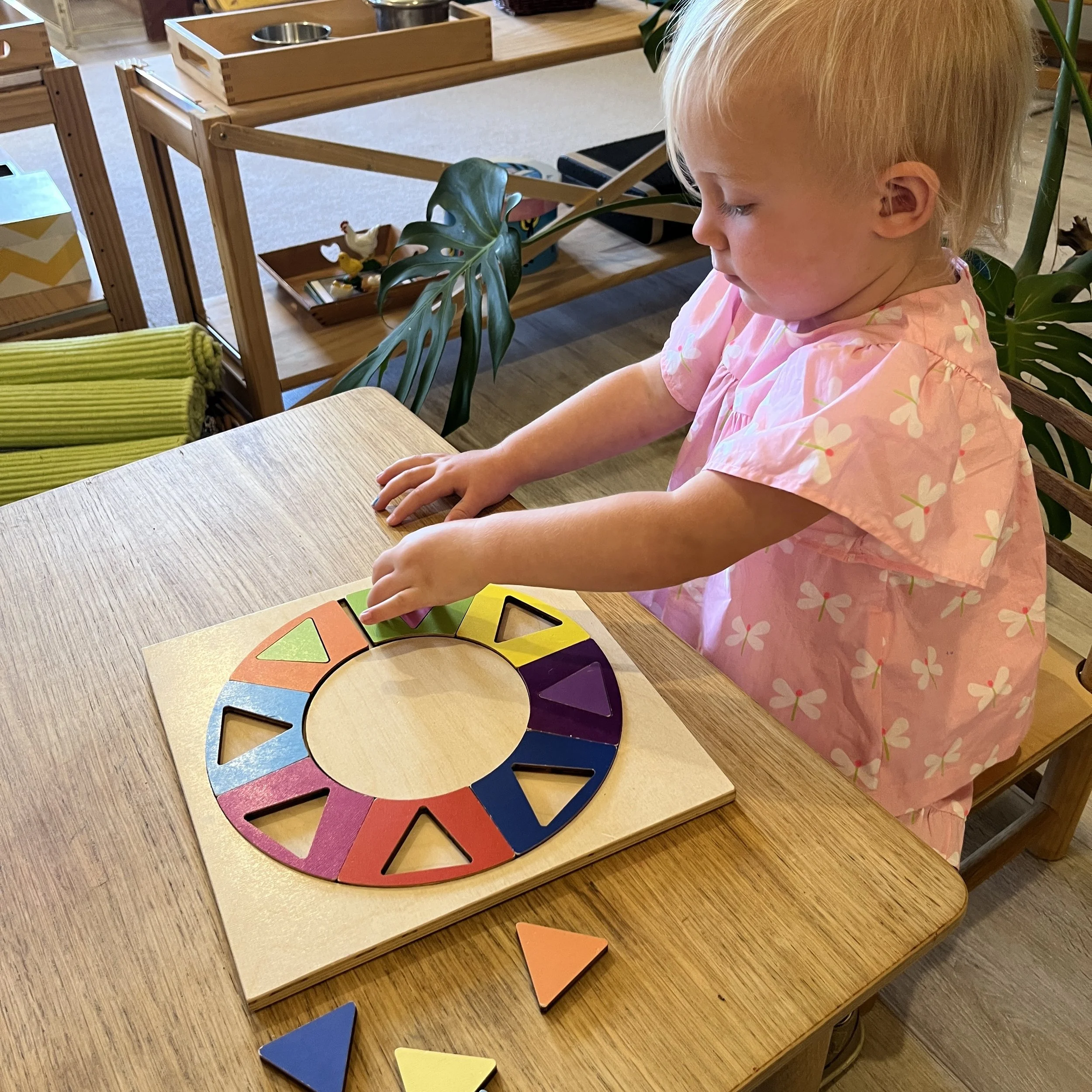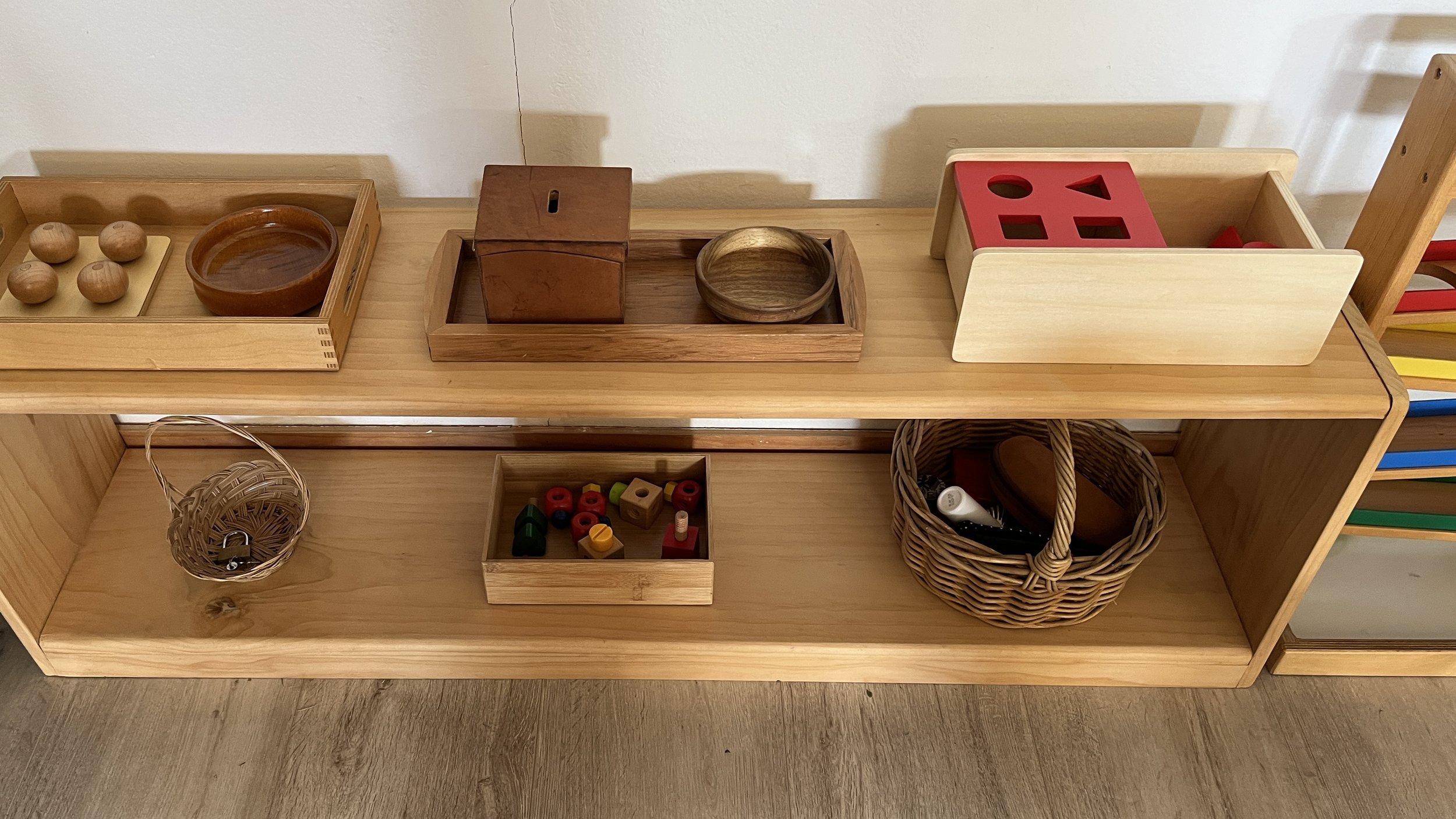How Developmental is Your Environment?
Our infant and toddler Montessori environments should serve as an aid to life. Motives for activity are well thought out when we combine our understanding of the universal play urges of children with our understanding of Montessori principles.
If we understand anything at all about Montessori principles and practice then we know that our environments for infants and toddlers must serve as an “aid to life” and the materials within serve as “motives to activity” - but do we really understand what “aid to life” and “motives for activity” really mean? Let us explore these ideas a little more closely…
How does the environment serve as an aid to life?
“If you want a golden rule that will fit everything, this is it: Have nothing in your houses that you do not know to be useful or believe to be beautiful.” - William Morris
I believe wholeheartedly that we ought to take this golden rule seriously in an environment for infants or toddlers. I often find myself assuring visitors to Aroha Nui Montessori, that I can speak to them at length about the developmental purpose of each item in our environment – nothing is here by chance, or just because we felt like it. Because of this I know that the things we provide are useful - they serve both as aids to life and as motives to activity.
Even the aspects in our environment we have included for aesthetic purpose (aka beauty) have purpose - a beautiful environment calls us to spend time in it. Beautiful objects inspire greater care and more gentle handling. Many of our materials are handmade by people the children can relate to - our chairs and tables have been built by a family member who often calls in, to see us or help us when something needs repairing. Our facecloths have been knitted by my grandmother. Children gain an emotional connection to the environment, that stays with them for life, when they experience a place that we have created with our hands and hearts. We care for it as our home, and they learn to do the same - building a strong sense of belonging. I honestly don’t know any greater aid to life, to any human being, than true belonging.
What about the materials?
We know that practical life items are useful by their very definition but what about all the other materials?
Infants are born with reflexive moments that over the first years of life become refined and voluntary as they move and explore. Gross motor opportunities are vital – beginning with free, uninterrupted floor time, from where babies can observe the goings on of the day. Soon the child discovers rolling over, slithering, crawling and sitting, and then before we have blinked they are pulling up and cruising around the furniture, before letting go and taking those first steps.
Equipment such as stairs, platforms, climbing frames and railings act as motives for activity and provide crawling, cruising and early walking children with a variety of physical challenges to explore. They are often able to get to a higher level of the environment without relying on an adult to pick them up. The joy expressed by a barely walking toddler, who cruises along the bridge or climbs the triangle to gain a new perspective, is a wonder to behold. We observe the beauty of them developing control of movement - all without being “taught” - this is natural development in action.
"Children naturally like to walk and move around, and open stairs will always be filled with them as they climb up and down and scramble about." - Maria Montessori
We also have a great many manipulative experiences (not to be confused with practical life please - these are experiences for developing the strength and fine motor skills of the hand).
We are incredibly fortunate in Aotearoa NZ to have wonderful advocates for play in early childhood education, among them one of our good friends Kimberley Crisp.
Kimberley coauthored the book “The Sacred Urge to Play” with the wonderful late Pennie Brownlee and if you haven’t yet come across it - I strongly urge you to seek it out. Within the pages are descriptions of “Universal Play Urges” – and it is understanding these urges (also called schemas by other writers) that helps when choosing just what it is we will place in our environment.
Many Montessori materials and experiences for infants and toddlers are based on satisfying these urges. Grazia Honneger Fresco writes of her own contribution to the development of infant and toddler Montessori materials in her article “The Cosmic Task of Young Children - Direct Anticipate or Respect.” and it is clear to me that she also noticed the universal play urges of young children.
By combining our understanding of play urges with our knowledge of child development, and then adding Montessori principles, we can create all kinds of experiences that satisfy the child’s needs and serve as motives for activity in the environment.
Let’s discuss just a couple of the many urges and share some ideas for how they can be satisfied…
Posting – Montessori catalogues are filled with expensive boxes to post balls and shapes into, having some of these materials is wonderful (and did you know we have a toy library you can join to loan many of these items?) but in addition to them, we can also create opportunities for posting objects through having a range of containers available and objects to post into them – perhaps buttons into a tin money box or small dowels in a beautiful native timber pen holder. Ensuring there are natural loose parts included in the environment – especially outdoors where we can have baskets of pinecones, wooden rounds or shells etc - we will see that children instinctively post into buckets or wheelbarrows – then of course we may also see objects being transported (another of the urges).
Sequencing/sorting – children naturally begin to order and organise objects into patterns – in your blocks basket ensure there are enough of the “same” - coloured, shaped, and sized items that pattern making is a possibility. In our environment we tend to put out sets of 10 beads for threading (which makes it nice and simple when you’re trying to find the beads scattered on the floor) and either have two sets of five or five sets of two – you’ll be amazed to see the patterns emerging. Again outdoors we can have a treasure trove of natural resources for children’s pattern making and sorting.
"If we are now agreed that education begins at birth, then it becomes vitally necessary for everyone to know the laws of development." - Maria Montessori
Understanding and catering to universal play urges requires us to be acutely conscious of children’s development, we are called to think outside the box (or catalogue) and it helps us understanding children’s use of objects - we may have created an experience with a certain thought in mind only to discover the child finds another way - then we are called upon to reflect - is “another way” wrong? Motives to activity are just that - a call to the child’s curiosity and exploration.
If we are truly committed to ensuring our environments serve as an aid to life then I strongly encourage you to discover more about the universal play urges and how they mirror many of our Montessori materials - you may just discover that missing element you’ve been searching for.
Aroha Nui
Carli



